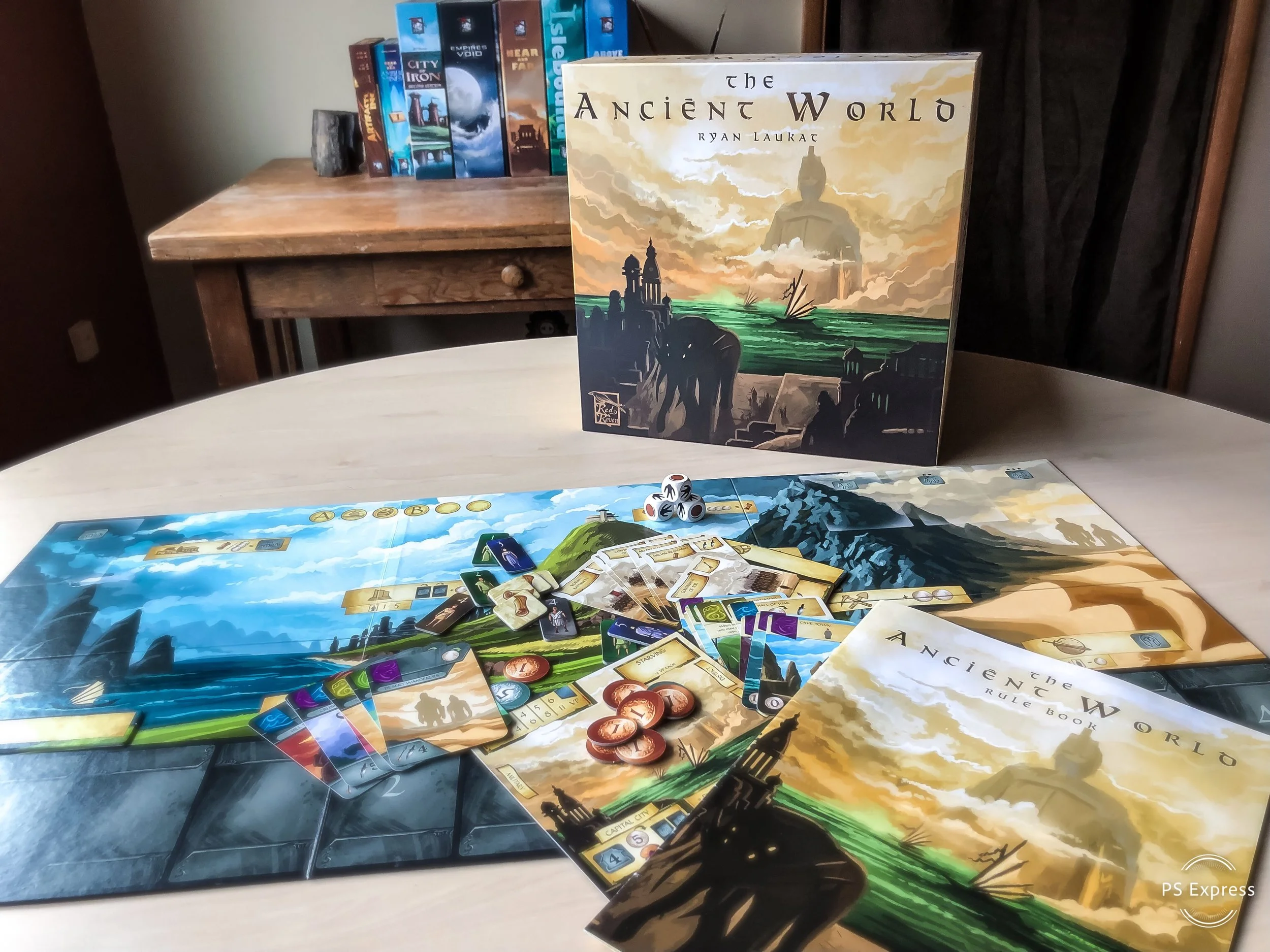The Ancient World
The Ancient World feels like the history of empires, now long gone, that Above and Below Islebound and City of Iron are built on. The world Ryan Laukat created needed a history, here it is. Once mighty nations now fallen to ruin, nothing left but city ruins and the bones of the titans across a landscape. But not quite yet, In Ancient World we get to experience that history, going back, building and expanding an empire while fighting off the relentless Titans hellbent on the destruction of civilization.
Right away, and I know it seems redundant, Ryan’s art is exceptional. The color pallet is less vibrant that Above and Below and Isle Bound, though no less gorgeous. The iconography is well designed and leads the player through an intuitive turn of decision making. The main game tableaux, aside from just being inspiringly gorgeous, (where players alternate interacting on) is very well laid out, uncluttered and spread out. As you develop your empire a player may choose to add different facilities to their player tableaux which are (as you might expect) really fun to just day dream about. Equally fun to look at are the titan cards. With three levels of titans to contend with players develop their military prowess in order to attack and defeat the titans as they approach civilization. The artwork that depicts the titans looks awesome and ominous and accentuate the immersive experience of the game.
Mechanically there are a couple of interesting innovations that Ryan introduces into the game. The first is the worker placement sequence. Each player start with three citizens that are labeled with a one, two or three, respectively. When placing your citizen on the central tableau, the one through three matters because the next player to place a worker, in the same place, must place a worker with a higher number. It’s not ground-breakingly amazing, but does serve as an elegant way to put some tension into a worker placement driven game. The mechanics makes sure that players are not just in each others way, but provides a bit of strategy and tension, just what most worker placement games lack. The other innovation is the military ‘retirement’ process. As your empire develops and you want a more effective fighting force to attack the larger and more threatening titans with, you have to contend with the limitation of only being allowed two military mercenary units. The mechanic solves it’s own problem by allowing players to retire a unit that has become too expensive to maintain. These mercenaries only fight when they are paid and each time they fight they want double the pay they received from the previous fight. When a mercenary army is too expensive to pay players may retire them. They become a cadre of elite trainers and commanders and the card is flipped over and placed just above unit they are replacing. On the reverse side of each military card are random icons that add to the replacing units capabilities. The new unit is a little more elite and the cost of paying them is reset. I like this mechanic, it adds another layer of decisions that players can meditate over. Again, nothing ground-breaking, but enough to make the game fun.
Although The Ancient World is a departure from Above and Below and Islebound it fits artistically, mechanically while supporting the narrative that Ryan Laukat has created.


